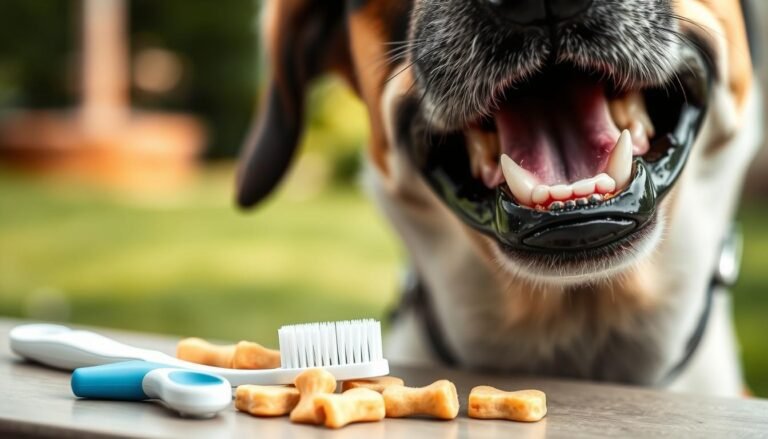Have you ever wondered why our adorable puppies have such a knack for turning our fingers into chew toys? It can be a confusing and sometimes frustrating experience, especially when those tiny teeth seem sharp as needles! But rest assured, we’re here to help navigate this stage in our puppers’ lives.
Understanding Puppy Biting
Puppy biting is a natural behavior, and it’s something most puppies go through as they grow. It’s often part of their development, play, and exploration. Recognizing this can set the foundation for stopping it effectively.
Why Do Puppies Bite?
Puppies bite for several reasons. Among them are:
- Exploration: Just like babies, puppies explore their world with their mouths.
- Teething: Like humans, puppies undergo a teething phase where biting helps relieve discomfort.
- Play Behavior: Biting is often part of an instinctive playfulness.
- Attention-Seeking: Sometimes, they bite to get our attention, good or bad!
Understanding these reasons allows us to respond more effectively and compassionately to their behavior.
What’s Normal and What’s Not?
It’s essential to recognize the difference between standard puppy biting and biting that can become problematic. Generally, playful nibbles are normal, but aggressive biting can indicate a behavioral issue we must address.
Training Techniques to Curb Puppy Biting
Now that we understand the reasons behind puppy biting, we can focus on some effective training methods to curb this behavior. Consistency, patience, and repetition are key ingredients in our training toolkit.
Redirecting Attention
One of the most effective methods of stopping biting is redirecting our puppy’s attention to appropriate chew toys.
- Step 1: When our puppy starts to bite us, calmly remove our hand or foot.
- Step 2: Immediately present a chew toy instead.
- Step 3: Encourage them to chew on the toy instead.
- Step 4: Praise them when they shift their focus.
This way, they learn that chewing on their toys is acceptable, whereas biting humans is not.
Using Positive Reinforcement
Puppies respond well to positive reinforcement. By rewarding good behavior, we can guide them in the right direction.
- Tip: Whenever our puppy plays gently, we should praise or treat it. This reinforces that they receive positive attention for not biting.
Time-Outs
Like everyone, puppies need to learn boundaries, and using time-outs can be an effective way to communicate that their biting behavior is not acceptable.
- Implementation:
- If our puppy bites too hard, calmly remove ourselves from the situation.
- Put them in a safe space for a brief time-out.
- After a few minutes, we can reintroduce them to playtime, allowing them another opportunity to engage without biting.
Socialization
Socialization with other puppies and tolerant adult dogs is an important step in teaching our puppy bite inhibition.
- Benefits: It helps them understand how to moderate their biting during play.
- Strategy: Look for puppy training classes or safe playgroups where our puppy can learn through interaction.
Teaching the “No Bite” Command
Teaching our puppy a specific command can create clear communication about when they are crossing the line.
- Practice: Use a firm, but not stern voice to say “no bite” whenever they bite.
- Reward: Once they stop, we can praise or give them a treat to reinforce the desired behavior.
Consistency is Key
We need to be consistent in our commands and actions. If one family member allows biting while another reprimands it, our puppy may become confused about what’s acceptable.
Choosing the Right Chew Toys
Having the right chew toys on hand is essential in curbing biting behavior. Let’s explore some options we should consider.
| Type of Toy | Benefits |
|---|---|
| Rubber Toys | Durable, good for teething, and provides a satisfying chew. |
| Rope Toys | Great for tug-of-war while helping clean their teeth. |
| Soft Plush Toys | Provide comfort, ideal for gentle chewers. |
| Edible Chews | These can help during teething, but we should monitor the calories. |
Selecting a variety of chew toys can keep our puppies engaged while satisfying their natural instinct to bite.
When to Seek Professional Help
If our puppy’s biting is persistent or aggressive, we may need to seek professional help. Here are some signs that indicate it might be time to consult with a veterinarian or a professional dog trainer:
- Inability to Stop: If we find it challenging to curb the biting despite consistent training.
- Aggression: It’s concerning if their biting often leads to growling or other aggressive behaviors.
- Biting the Wrong Objects: If they start to chew on furniture or shoes, that could indicate that their chewing needs more management.
Communication with Professionals
When reaching out to a professional, providing them with as much information as possible will help them assist us better.
- We should keep notes on our puppy’s behavior, triggers for biting, and any methods we’ve already tried.
Health Considerations
Sometimes, biting can be related to health issues rather than behavioral problems.
Teething Issues
Puppies go through a teething phase where their baby teeth fall out and adult teeth come in. This stage can lead to discomfort and an increase in chewing and biting tendencies.
- Signs: Excessive drooling, chewing on objects, and being more irritable than usual can indicate teething discomfort.
- Solutions: Providing frozen or chilled chew toys can soothe their gums during this time.
Pain or Illness
If biting suddenly escalates or if our puppy who was previously well-behaved starts biting aggressively, it might be a sign of pain or illness.
- Actions: We should consult with a vet to rule out any medical issues that may be causing pain or discomfort.
Frequently Asked Questions
Let’s summarize some common questions related to puppy biting.
How long does puppy biting last?
Generally, we can expect the biting stage to last until our puppy is about 6 months old, though it can vary depending on the individual dog.
Is it okay for puppies to bite during play?
Light, playful nips are normal, but they should not be hard or aggressive. It’s important to teach and encourage gentle play.
What if my puppy bites my children?
It’s crucial to teach our puppy how to interact safely with children. Supervised playtime and teaching the kids how to respond to biting (including how to use toys for interaction) can help.
Can training methods used for older dogs apply to puppies?
Older dogs may require different approaches since their behavioral patterns are more established. However, many training techniques can be adapted for puppies as well.
Final Thoughts
Puppy biting is a common stage that we all experience as our furry friends adjust to their new lives with us. With patience, understanding, and consistent training methods, we can effectively curb this behavior.
Ultimately, it’s about building a strong foundation for communication and trust between us and our puppies. By investing our time and effort now, we pave the way for a well-behaved and affectionate companion in the years to come.
So, let’s grab those chew toys, establish those commands, and put our training techniques to work! Our journey with our puppies can be filled with love, laughter, and yes, even a few nibbles!





